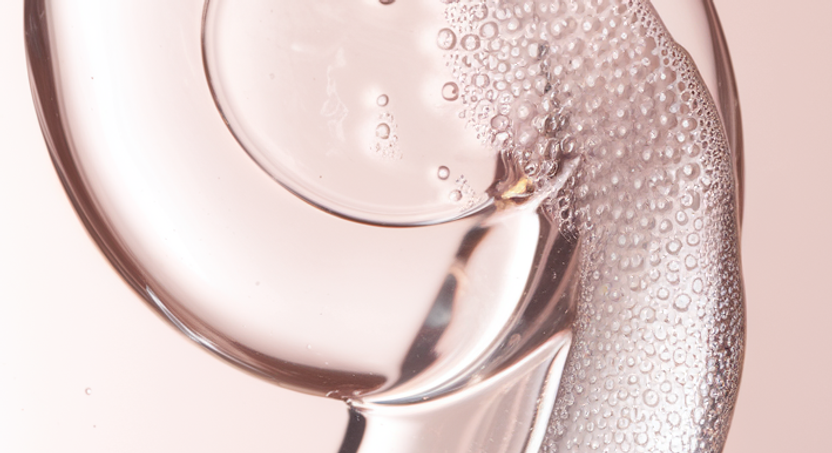Why Do Mild Cleansers Have No Foam? A Look at How They Differ from Commercial Cleansers
By:
Kevin Chong
On
31/10/2024Reading time:
5 min
Summary:
When we think of a cleanser, we often picture a rich, foamy lather that leaves our skin feeling squeaky clean. However, mild cleansers, especially those formulated for sensitive and dry skin, tend to produce little to no foam. This lack of foam can be surprising at first, but it’s an intentional feature designed to protect and soothe delicate skin.
In this blog, we’ll explore why mild cleansers have little to no foam, how they differ from conventional foaming cleansers, and why this is beneficial, particularly for people with sensitive, dry, or eczema-prone skin

Understanding Foam: What Creates Lather in Cleansers?
The lather we associate with cleansers is typically produced by surfactants, which are compounds that reduce the surface tension of water, allowing oils and dirt to be lifted off the skin. Some common surfactants found in commercial cleansers include:
Sodium Lauryl Sulfate (SLS)
Sodium Laureth Sulfate (SLES)
Ammonium Lauryl Sulfate
These surfactants are highly effective at removing oil, dirt, and makeup, creating a rich foam that makes the cleansing experience feel thorough. However, they are also harsh and can strip the skin of its natural oils, causing dryness and irritation, especially in people with sensitive or compromised skin barriers.
Why Mild Cleansers Are Formulated with Low or No Foam
Mild cleansers are specifically designed to be gentler on the skin. Here are some reasons why they don’t produce the same foamy lather as conventional cleansers:
1. Less Stripping of Natural Oils
The surfactants in foaming cleansers are powerful enough to remove natural oils from the skin’s surface, which can leave the skin feeling tight and dry. Mild cleansers, on the other hand, are formulated with gentler surfactants (or sometimes none at all), reducing the amount of foam produced. This helps the skin retain its natural oils, which are essential for maintaining hydration and protecting the skin barrier.
2. Minimizing Irritation for Sensitive Skin
For people with sensitive or eczema-prone skin, traditional surfactants like SLS can lead to irritation, redness, and itching. Mild cleansers use non-foaming agents or very gentle surfactants to reduce the risk of irritation, making them ideal for those with reactive skin. By keeping foam levels low, mild cleansers minimize the likelihood of disrupting the skin’s pH balance or aggravating existing skin conditions.
3. Supporting Skin Barrier Function
The skin barrier is crucial for protecting against environmental pollutants, bacteria, and moisture loss. Harsh, foaming cleansers can strip away natural lipids, weakening this barrier and leading to increased sensitivity and dehydration. Mild cleansers support barrier health by using gentler ingredients that cleanse without disrupting the skin’s natural protective layer.
The Key Differences Between Mild and Commercial Foaming Cleansers
While both mild and foaming cleansers are effective at removing impurities, their approaches differ significantly:
1. Ingredients Used
Foaming Cleansers: Often contain SLS, SLES, or other sulfates, which are powerful at producing foam but can be drying.
Mild Cleansers: Use gentler ingredients like cocamidopropyl betaine, decyl glucoside, or glycerin-based cleansers. These ingredients cleanse without stripping, leaving the skin feeling soft and hydrated.
2. Skin Sensation After Cleansing
Foaming Cleansers: Can leave the skin feeling tight, which many people mistakenly associate with cleanliness. However, this tightness is a sign that the skin’s natural oils have been stripped away.
Mild Cleansers: Leave the skin feeling soft and comfortable, without the dry, tight sensation. This gentle approach is especially beneficial for people with dry or sensitive skin.
3. Purpose and Target Audience
Foaming Cleansers: Designed for individuals with normal to oily skin who may need a stronger cleanser to remove excess oil and makeup.
Mild Cleansers: Tailored for those with dry, sensitive, or compromised skin, who benefit from a product that cleanses without disrupting the skin’s balance.
Who Benefits Most from Using Mild, Non-Foaming Cleansers?
Mild, low-foam cleansers are ideal for people with sensitive, dry, or eczema-prone skin. This includes:
Individuals with Skin Conditions: People with conditions like eczema, rosacea, or psoriasis are more susceptible to irritation and dryness, so a mild cleanser can help soothe and protect their skin.
Those with Compromised Skin Barriers: Using a mild cleanser can support the healing process and maintain moisture for people with damaged skin barriers.
Aging Skin: As skin ages, it tends to produce less oil, making it more prone to dryness. Mild cleansers help maintain hydration and softness without stripping the skin.
Choosing the Right Mild Cleanser
When selecting a mild cleanser, look for terms like:
“Sulfate-Free”
“Soap-Free”
“pH-Balanced”
“Fragrance-Free”
Additionally, ingredients like aloe vera, chamomile, glycerin, and hyaluronic acid are excellent for providing hydration and soothing sensitive skin.
The lack of foam in mild cleansers is not a flaw—it’s a feature designed to protect and nurture your skin. For those with sensitive, dry, or compromised skin, mild cleansers offer a way to cleanse without sacrificing the skin’s natural balance. By opting for a low-foam or non-foaming cleanser, you can help maintain a healthy, hydrated, and comfortable complexion.
